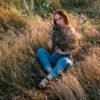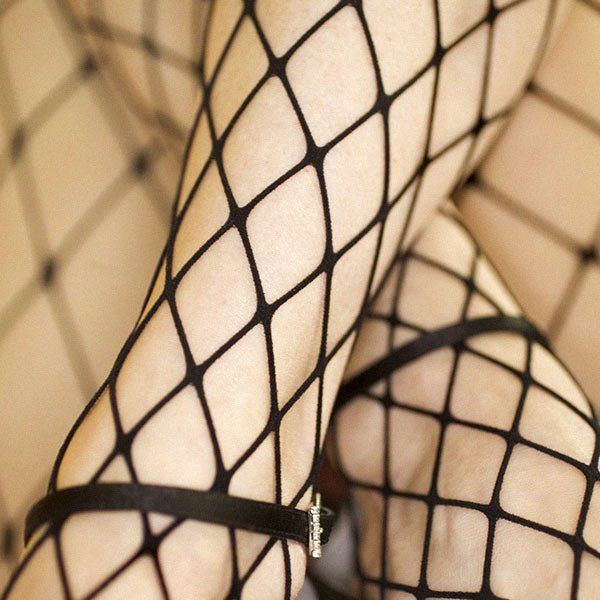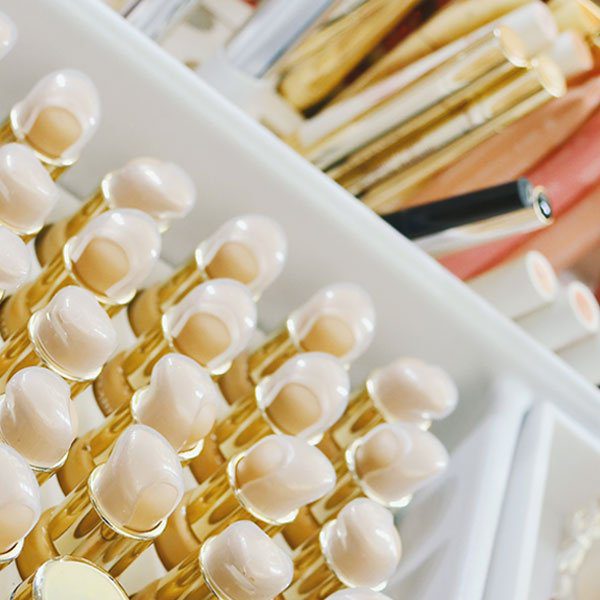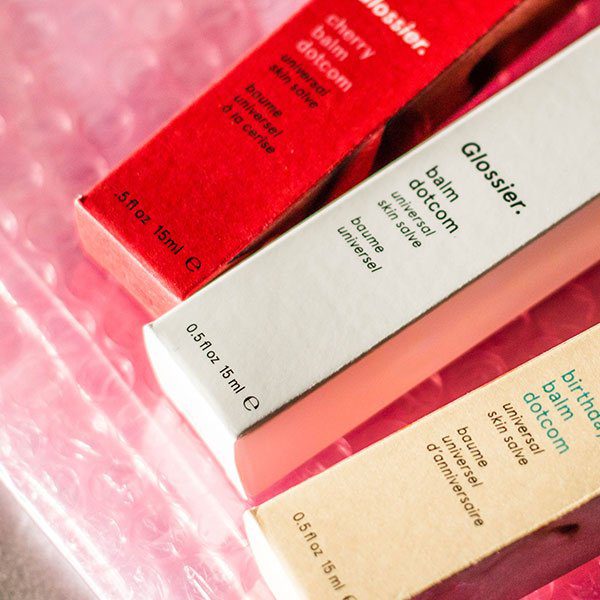KTS Boudoir Magazine
oudoir photography is much more than just capturing a subject in intimate settings; it's an art form that delves deep, unearthing the inner beauty and raw authenticity of every individual. Through the masterful play of shadows and light, the photographer not only captures the external allure but also narrates a tale of sensuality, strength, and vulnerability.
“Light has the power to illuminate more than just the physical; it illuminates the essence of beauty and sensuality within. In the world of boudoir photography, it is the brush that paints the canvas of confidence and unveils the hidden depths of the soul.”
In this realm, lighting is not just a tool—it’s the very essence that can make or break an image. It has the unique capability to amplify the sensuality of a scene, shed light on the strength of the subject, and render vulnerability in the most beautiful and respectful manner. As we dive into the world of boudoir photography, we’ll discover the transformative power of lighting and how, with the right tricks, it can elevate an image to a masterpiece.

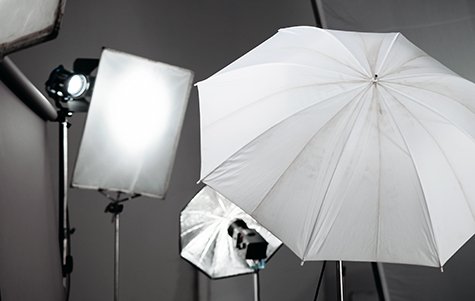
The Power and Poise of Natural Light
There’s an unparalleled magic that natural sunlight brings to the canvas of boudoir photography. Its gentle caress can bathe subjects in an ethereal glow, highlighting their features with a softness that artificial lights often strive to mimic.
One of the greatest allies in harnessing this divine luminescence is the humble window. Large windows, especially, invite the generous warmth of sunlight, creating an ambiance that’s both delicate and dynamic. But it’s not just about allowing the sunlight to stream in uncontrolled; it’s about directing, diffusing, and playing with it to craft the desired narrative.
Utilizing curtains or sheer fabrics can further refine this interplay of light. Drawing a curtain can mellow down harsh midday sunlight, turning it into a gentle, diffused beam that wraps around the subject. Similarly, sheer fabrics can add a layer of mystery and dreaminess, softly scattering the light to give a haloed effect. The dance of sunlight through these materials creates patterns and gradients, offering a dynamic range of lighting situations in one setting.
In essence, when wielded with understanding and creativity, natural light, with its variations and moods, can transform the ordinary into the extraordinary, making each boudoir shoot a testament to timeless beauty.

Window-Lit Silhouettes: Merging Light and Mystery
Silhouettes have an enigmatic charm. They offer a glimpse, yet conceal details, allowing the viewer’s imagination to run wild, filling in the story. In boudoir photography, the blend of light and shadows through window-lit silhouettes can evoke a sense of mystery, allure, and raw sensuality.
Positioning is paramount when aiming to achieve this mesmerizing effect. Here’s how to master the art:
- Choose the Right Window: Look for a window that receives ample light, preferably with a clear or uniform view outside. The intensity and direction of the light will be essential in shaping the silhouette.
- Position Your Subject: Place your subject directly in front of the window. Depending on the desired effect, you might have them stand close to the window for a sharper silhouette or a bit further away for a softer outline.
- Camera Settings are Crucial: Expose for the outside light. This means metering for the brightest part of the window, ensuring that the background is well-lit while your subject remains dark, rendering them as a silhouette.
- Use Props or Movement: Allow your subject to interact with curtains, window frames, or even just the light. Movements or gestures can create dynamic shapes and add layers to the story you’re trying to convey.
- Post-Production Magic: In post-processing, you can enhance the contrast to make the silhouette stand out more, ensuring the subject is darkened adequately against the luminous background.
Remember, the essence of window-lit silhouettes lies in its simplicity and the profound sense of mystery it brings to the table. It’s not about capturing every detail, but about creating a compelling outline that tells a story, evokes emotions, and leaves an imprint on the viewer’s mind. Through this technique, you invite viewers to see beyond the surface, delving deep into the narrative you’ve crafted with light and shadow.

Ring Light Techniques: A Photographer’s Best Kept Secret
In the vast toolkit of a boudoir photographer, the ring light shines brightly, both literally and figuratively. An almost mystical device, its design and the quality of light it produces can elevate a photograph from ordinary to extraordinary, bestowing subjects with a mesmerizing glow that’s hard to replicate with other lighting equipment.
- The Allure of Even Illumination: One of the paramount benefits of using a ring light is its capacity to offer even and consistent illumination. Due to its circular design, the light emanates evenly from all directions, reducing harsh shadows and highlighting the subject in a flattering manner. This uniformity ensures that facial features are illuminated with a soft glow, smoothing out imperfections and making the skin look radiant.
- The Magical Halo Effect: Perhaps the most enchanting quality of the ring light is the ‘halo effect’ it produces. When positioned correctly, the light creates a subtle halo or ring reflection in the subject’s eyes, bringing them to life with a captivating sparkle. This not only draws attention to the eyes but also adds depth and dimension to the overall image.
- Ring Light Angles and Intensities: Variety is the spice of boudoir photography. With the ring light, photographers have the flexibility to experiment with different angles and light intensities. Positioning the ring light directly in front of the subject offers a straight-on illumination, while angling it slightly can introduce a play of shadows, adding more drama and character to the shot.
- Accentuating Focus: Due to its design, a ring light naturally draws attention to the center of the image. By placing your subject in this focal area, you ensure they remain the main point of attraction, with the evenly distributed light further enhancing their prominence in the frame.
- Versatility Beyond Portraits: While often associated with close-up portraits, the ring light is not limited to just headshots. When used creatively, it can illuminate full-body shots, lending them the same ethereal glow and ensuring the entire frame is consistently lit.
In conclusion, the ring light, often deemed a photographer’s best-kept secret, is a game-changer in boudoir photography. Its unique design and the quality of light it offers can transform images, ensuring subjects are showcased in the most flattering and enchanting light. Whether you’re a novice or a seasoned professional, mastering the ring light can significantly elevate the quality and artistry of your work.










Creating Ambiance with Candlelight
In the intimate setting of boudoir photography, where the objective is to capture the essence of sensuality, vulnerability, and inner beauty, the ambiance is of paramount importance. Among the myriad of lighting techniques available, candlelight stands out, offering a unique and delicate touch that can deeply resonate with the essence of boudoir.
- The Romanticism of Candle Glow: Candlelight has been synonymous with romance for ages. Its soft, flickering glow can evoke a sense of warmth, nostalgia, and intimacy, making it an ideal choice for boudoir shots. The wavering light dances on the skin, casting gentle shadows and highlights that can accentuate the curves and natural beauty of the human form.
- Setting the Mood: Beyond just illumination, candles can significantly set or change the mood of a photograph. The mere presence of candles can conjure feelings of serenity, romance, or even mystery. Depending on the placement and number of candles used, photographers can craft an ambiance ranging from deeply intimate to ethereally dreamy.
- Safety First: As enchanting as they are, candles do come with their inherent risks, especially in a studio setting with various flammable materials. When incorporating candlelight:
- Ensure there’s ample space between the candles and any flammable materials.
- Never leave candles unattended.
- Use stable candle holders to prevent tipping.
- Keep a fire extinguisher or water source nearby for emergencies.
- Blending Candlelight with Ambient Lighting: While candles alone can create a beautiful atmosphere, blending them with dim ambient lighting can add layers of depth and sophistication to the image. This combination can strike a balance, ensuring the subject is well-lit while still enjoying the candle’s intimate glow.
- Playing with Shadows and Reflections: One of the intriguing aspects of candlelight is the play of shadows it creates. Placing candles strategically can cast intriguing patterns of light and shadow on the subject. Additionally, using reflective surfaces, like mirrors, in conjunction with candles can amplify the effect, adding dimension and drama to the photograph.
In the world of boudoir photography, where each image is a story of beauty, vulnerability, and strength, candlelight serves as a poetic medium. Its soft, romantic glow, combined with the delicate dance of its flames, can transform a photograph into a visual sonnet. However, while its beauty is undeniable, always prioritize safety to ensure that the session remains both enchanting and secure.










Spotlight Mastery: Emphasizing Body Positivity
In the world of boudoir photography, the human body is celebrated in all its beauty, grace, and individuality. Spotlighting, when done right, can be a potent tool in a photographer’s arsenal to accentuate the subject’s unique features, enhancing the narrative of body positivity and self-love. Here’s how spotlighting can be effectively harnessed to create empowering boudoir images:
- The Power of Focused Illumination: Unlike broad light sources that disperse light evenly across a scene, spotlights cast a concentrated beam of light, allowing photographers to illuminate specific areas of interest. This precision gives photographers the freedom to highlight the aspects of their subject that they find most captivating, while subtly casting other areas in shadow.
- Celebrating Curves and Contours: Everybody is a masterpiece, with its unique set of curves, edges, and textures. Spotlighting can be employed to emphasize these features, creating dynamic images that celebrate the body’s natural form. By casting light on specific curves or contours, photographers can craft a visual narrative of empowerment, where the subject’s body is the star of the show.
- 3Drama and Depth: Spotlighting can add a layer of drama to boudoir images. The sharp contrast between the illuminated areas and the shadows can give the photographs a three-dimensional feel, adding depth and dynamism. This dramatic effect can enhance the emotional impact of the image, making it resonate deeply with viewers.
- Techniques and Tools for Effective Spotlighting: Achieving the desired spotlight effect requires a combination of the right tools and techniques:
- Directional Light Sources: Spotlights, snoots, or grid modifiers are tools that can be used to produce a focused beam of light. Depending on the desired effect, photographers can choose the tool that best suits their vision.
- Adjustable Intensity: The intensity of the spotlight can be adjusted to control the brightness of the illuminated area. A softer beam can create a subtle, romantic feel, while a more intense beam can be more dramatic.
- Positioning and Angles: Experimenting with the angle and position of the spotlight can yield different results. A top-down angle might accentuate facial features, while a side angle could emphasize body contours.
- Collaborative Creativity: Boudoir photography is deeply personal, making collaboration between the photographer and the subject essential. Discussing comfort levels, areas of focus, and the desired outcome can ensure that the spotlighting technique aligns with the subject’s vision of self-celebration.
In conclusion, spotlighting in boudoir photography is not just a lighting technique; it’s a statement of celebration. By thoughtfully employing spotlighting, photographers can emphasize body positivity, crafting images that not only capture the body’s beauty but also its strength, resilience, and individuality.










Softbox Techniques: A Go-To for Flawless Illumination
In the realm of boudoir photography, where every nuance of light can shape the mood and tone of an image, softboxes have solidified their position as indispensable tools. With their ability to diffuse light and reduce harsh shadows, they are the silent champions behind many stunning and ethereal boudoir captures. Here’s a deep dive into the world of softbox lighting and how it can enhance your boudoir photography sessions:
- Understanding the Softbox Magic: At its core, a softbox is a light modifier designed to produce soft, even lighting. It consists of a reflective interior, a light source, and one or more layers of diffusion material at the front. The diffused light emerging from a softbox ensures smooth transitions between highlights and shadows, making the subject appear more naturally illuminated.
- Minimizing Imperfections: One of the standout benefits of softboxes is their ability to diminish the appearance of skin imperfections. By casting a uniform light, softboxes reduce harsh contrasts, which can amplify skin blemishes, wrinkles, or uneven tones. The result? A radiant subject, showcasing their natural beauty with minimal distractions.
- Crafting Flattering Shadows: While eliminating shadows entirely can render an image flat and lifeless, softboxes produce subtle, flattering shadows that add depth and dimension. These gentle shadows contour the subject’s features, from the curvature of the cheekbones to the delicate lines of the collarbone, enhancing the photograph’s overall aesthetics.
- Flexibility in Size and Placement: Softboxes come in various sizes, from small ones perfect for accent lighting to larger ones designed for full-body illumination. Here are some techniques to consider:
- Size Matters: Larger softboxes produce softer light, making them ideal for full-body shots or when you want minimal shadow differentiation. Smaller softboxes, on the other hand, offer more controlled lighting, perfect for accentuating specific features.
- Placement Perfection: The position of the softbox determines the direction of the shadows. A frontal placement will cast minimal shadows, offering an evenly lit portrait. Placing the softbox to the side introduces more depth, creating a moody, dramatic effect.
- Angle Insights: Angling the softbox downwards mimics natural overhead lighting, like the soft glow of the afternoon sun. Conversely, an upward angle can introduce an element of intrigue, especially when capturing close-up shots.
- Experimentation is Key: Every boudoir session is unique, shaped by the subject’s personality, comfort, and vision. Therefore, while there are foundational techniques, the true magic lies in experimentation. Adjusting the distance, tweaking the angle, or layering with other light sources can produce varied and captivating results.
In conclusion, softboxes are more than just lighting tools; they are instruments of artistry in boudoir photography. By mastering the myriad techniques associated with softbox lighting, photographers can ensure that each shot is not only flawlessly illuminated but also brimming with emotion, depth, and authenticity.










Exploring Gobo Techniques: Intrigue and Depth
Gobo techniques, often relegated to the background in standard photography discussions, have steadily gained prominence in the nuanced world of boudoir. These light-altering tools, when used skillfully, can craft an atmosphere of mystery, allure, and textured depth in photographs. Let’s delve into the fascinating realm of gobos and discover how they can amplify the intrigue in boudoir photography.
- What is a Gobo?: The term “gobo” stands for “go-between optics.” At its simplest, a gobo is a stencil or template placed between a light source and the subject. By blocking certain areas of light, gobos create shadows or patterns on the subject or background. The result is a rich interplay of light and darkness that adds layers of depth to an image.
- Gobos in Boudoir: In boudoir photography, where emotion and mood are paramount, gobos can be a game-changer. They can transform a straightforward shot into a story-laden masterpiece. The shadows and patterns introduced by gobos evoke feelings of mystery, allure, and sometimes, introspection, turning a photograph into a narrative.
- Crafting Captivating Shadows:
- Lace Intricacy: The delicate patterns of lace make it a favorite choice for many boudoir photographers. When used as a gobo, lace can cast intricate shadows on the subject, adding a touch of elegance and sensuality. This technique can be especially poignant when highlighting the delicate curves and contours of the body.
- Foliage Fantasy: Nature has an undeniable allure, and foliage gobos can introduce an organic and ethereal element to boudoir shots. Whether it’s the silhouette of leaves, the play of light through branches, or the shadow of petals on skin, foliage gobos connect the subject to nature, adding depth and narrative.
- Pattern Play: Beyond lace and foliage, there’s a plethora of patterns and materials to explore. From geometric designs to abstract motifs, experimenting with diverse gobos can produce a range of effects, each telling a different story.
- Tips for Effective Gobo Usage:
- Distance Dynamics: The distance between the light source, the gobo, and the subject can dramatically alter the resulting shadows. A closer placement produces defined patterns, while increasing the distance softens the shadows, offering a more diffused look.
- Light Intensity: Adjusting the intensity of the light source can also affect the shadow’s sharpness and contrast. A stronger light will yield more pronounced shadows, whereas a dimmer light will provide a subtler effect.
- Layering Effects: For a richer visual experience, consider layering gobos or combining them with other lighting techniques. This layered approach can add complexity and depth to the image.
In conclusion, gobos are a powerful tool in a boudoir photographer’s arsenal. Their ability to introduce depth, narrative, and emotion into a photograph is unmatched. By understanding and experimenting with gobo techniques, photographers can craft images that not only captivate the eye but also stir the soul.










Infusing Color with Gels: An Artistic Approach
In the realm of boudoir photography, every detail contributes to the narrative. While the interplay of light and shadow is foundational, the choice of color can elicit profound emotional responses. Colored gels, versatile and potent, allow photographers to paint their canvas with a spectrum of moods. Dive into the artistic world of gel-infused boudoir photography, where colors speak louder than words.
- The Allure of Colored Gels: Colored gels are thin, transparent sheets that can be fixed to lighting equipment, infusing the emitted light with their hue. In boudoir photography, they’re not just about adding color; they’re about evoking emotion. From the passionate intensity of reds to the calm serenity of blues, every color has its own story to tell. The right hue can amplify the emotional resonance of a shot, making it unforgettable.
- Setting the Mood with Gels:
- Passionate Reds: The color red symbolizes passion, intensity, and love. When used in a boudoir setting, red gels can infuse a shot with an atmosphere of allure and desire, making it exceptionally captivating.
- Cool Blues: Blue, often associated with calmness and introspection, can give a serene, dream-like quality to images. Especially effective in emphasizing cooler tones, blue gels can set a tranquil and reflective mood.
- Energetic Oranges and Yellows: These warm colors can instill a sense of energy, vivacity, and positivity in photos, making the subject appear radiant and glowing.
- Mystical Purples and Pinks: These colors, balancing between the warmth of red and the coolness of blue, can be employed to create a sense of mystery, fantasy, or romance.
- Techniques for Effective Gel Usage:
- Attachment Basics: When using gels, ensure they’re securely attached to your light source. Commercially available gels usually come with attachment mechanisms, but in a pinch, gaffer tape can be invaluable. Ensure the gel doesn’t touch any hot light source directly, as it might melt or get damaged.
- Layering Gels: To achieve unique shades or gradient effects, consider layering multiple gels. This allows for a broader palette and more nuanced color effects.
- Intensity Interplay: Adjusting the intensity of the light source will not only affect the brightness but also the saturation of the color. Dimmer lights produce deeper, more saturated hues, while brighter lights result in softer, more pastel shades.
- Experimentation is Key: Boudoir photography thrives on creativity. Don’t hesitate to play around with different color combinations, intensities, and placements. Sometimes, the most unexpected choices yield the most breathtaking results.
In the art of boudoir photography, colored gels offer a canvas of limitless possibilities. By understanding their potential and experimenting freely, photographers can craft images that are not just visually stunning but also deeply emotive. Embrace the color spectrum and let your boudoir shots resonate with the myriad moods of the human heart.










The Art of Using Reflective Surfaces
In the dynamic world of boudoir photography, manipulating light can craft emotions, build atmospheres, and tell stories. Reflective surfaces, such as mirrors and metallic sheets, offer a unique dimension to this craft. They allow photographers to bounce, bend, and reshape light, adding depth, interest, and nuance to their images. This exploration dives into the creative ways to utilize reflective surfaces for capturing intimate and memorable moments.
- The Power of Reflective Surfaces: Reflective surfaces, with their inherent ability to redirect light, can be pivotal in sculpting the lighting of a shot. From filling in unwanted shadows to introducing interesting highlights, they can greatly influence the mood and texture of the image, allowing for both subtle enhancements and dramatic effects.
- Mirrors: Beyond Reflections:
- Filling Shadows: Placing a mirror opposite your main light source can help bounce light back onto the subject, filling in shadows and producing a more evenly lit result.
- Introducing Highlights: A smaller, hand-held mirror can be used to introduce selective highlights on specific areas of the subject, such as the cheekbones or collarbone, emphasizing features and adding depth.
- Crafting Stories: Mirrors aren’t just for reflecting light; they can also be integrated into the composition itself, adding layers of meaning and narrative to the shot. A subject’s reflection can hint at introspection, duality, or mystery.
- Metallic Sheets: Flexible Light Shapers:
- Diffused Reflection: Unlike mirrors, which offer a sharp reflection, metallic sheets (like gold or silver reflectors) provide a more diffused bounce of light. They can warm up or cool down the subject, depending on the metallic hue.
- Manipulating Light Intensity: By adjusting the angle of the metallic sheet, one can control the intensity and direction of the reflected light, allowing for fine-tuned adjustments.
- Portable and Versatile: Given their flexibility, metallic sheets can be molded into different shapes, letting photographers play with the character and form of the reflected light.
- Strategic Placement for Optimal Results:
- Angle is Everything: The angle at which light hits the reflective surface dictates the direction it’ll bounce off. Always be conscious of this angle and adjust as needed to get the desired lighting effect.
- Distance Matters: The closer the reflective surface is to the subject, the stronger the reflected light will be. Conversely, moving it further away will produce a gentler reflection.
- Mind the Background: Reflective surfaces can inadvertently introduce unwanted elements into the shot, especially mirrors. Always be aware of what’s being reflected in the background and adjust accordingly.
Harnessing reflective surfaces in boudoir photography is akin to having a dance of light at one’s fingertips. By understanding their potential and mastering their usage, photographers can add a distinctive touch to their images, creating shots that are not only visually arresting but also rich in emotion and narrative. Embrace the dance, and let the interplay of light and reflection elevate your boudoir imagery to new heights.










Embracing Shadows for Added Depth
While light is often seen as a photographer’s principal tool, shadows play an equally essential role, especially in the intimate setting of boudoir photography. Shadows aren’t just the absence of light; they’re the yin to light’s yang, crafting depth, adding dimension, and enhancing emotion. In boudoir imagery, shadows can be used to emphasize, to hide, and to create layers of mystery and allure. Here, we dive deep into the art of shadow play and how it can be harnessed to produce evocative and memorable images.
- The Beauty of Shadows: Shadows are powerful storytelling tools. They can create mood, evoke emotions, and add a sense of drama or subtlety to a photograph. In boudoir photography, shadows are instrumental in emphasizing the curves, contours, and intimate details of the human form, while also allowing for moments of restraint and suggestion.
- Soft vs. Hard Shadows:
- Soft Shadows: These are diffused and gradual, creating a gentle transition from light to dark. Soft shadows can be achieved using larger, diffused light sources or by placing the light source further from the subject. They’re perfect for a dreamy, romantic feel, adding subtlety and gentleness to the image.
- Hard Shadows: Characterized by a sharp transition from light to dark, hard shadows can be dramatic and bold. They’re produced using smaller, more direct light sources or by placing the light closer to the subject. Hard shadows can accentuate specific features and add a sense of depth and drama.
- Techniques for Masterful Shadow Play:
- Directional Lighting: By placing the light source to the side or at an angle to the subject, one can cast elongated shadows that accentuate features and create a sense of depth. The further the light source is moved to the side, the deeper and longer the shadow becomes.
- Backlighting: Positioning the light source behind the subject can silhouette them, creating a sense of mystery and intrigue. This technique plays with the viewer’s perception, letting them fill in the details with their imagination.
- Using Objects: Introducing objects like blinds, plants, or fabrics between the light source and the subject can cast interesting patterns, adding texture and layers to the image.
- Controlled Falloff: Falloff describes how quickly a light transitions to shadow. By manipulating the distance and size of the light source, one can control this falloff, allowing for shadows that either gradually fade or abruptly end.
- Embracing Imperfection: Remember, shadows don’t always have to be perfectly crafted. Sometimes, the most captivating images come from unplanned shadow play, where natural elements and spontaneous moments come together.
In conclusion, shadows, often seen as the underdogs of the lighting world, hold immense potential in boudoir photography. By understanding their beauty and mastering the techniques to manipulate them, photographers can craft images that resonate deeply, striking a perfect balance between revelation and concealment, light and darkness. Embrace the shadows, and let them add layers of depth and emotion to your boudoir creations.










Lighting – The Soul of Boudoir Photography
Every art form relies on a set of tools and techniques that breathe life into its creations. In the world of photography, and particularly in boudoir, lighting isn’t just a tool—it’s the very soul that illuminates the essence of every shot. Whether capturing the gentle curve of a silhouette, the intimate ambiance of a candlelit room, or the vibrant hues of colored gels, lighting lays the foundation upon which every other element thrives.
More than Mere Illumination
While lighting certainly serves the functional purpose of illuminating the subject, its significance goes beyond mere visibility. It’s a storyteller, narrating tales of vulnerability, strength, sensuality, and raw authenticity. The right light can flatter, conceal, emphasize, or even transform, adding layers of depth, emotion, and narrative to every frame.
The Spectrum of Techniques
As we journeyed through the intricacies of boudoir lighting techniques—from the ethereal charm of natural light to the dramatic play of spotlights and the artful embrace of shadows—it becomes evident that each method holds its own unique magic. Whether opting for the soft, even glow of a softbox or the textured intrigue of gobos, mastering these techniques allows a photographer to craft any mood or atmosphere they envision.
An Ever-evolving Art
The world of boudoir photography is dynamic, with evolving trends, styles, and innovations. As artists, photographers should view lighting not as a static skill but as a continuously evolving journey. It’s a realm where there’s always something new to learn, a different technique to master, or a unique vision to chase.
The Call to Illuminate
To all boudoir photographers out there—embrace the magic of light. Let it be your guide as you weave stories of beauty, empowerment, and authenticity. Dive deep into experimentation, challenge conventions, and never cease in your pursuit of mastering this elemental force. Because in the dance between shadow and light lies the heart of every compelling boudoir photograph.
In the timeless words of George Eastman, “Embrace light. Admire it. Love it. But above all, know light.” And in that knowing, you’ll unlock the true potential of boudoir photography, crafting images that resonate, captivate, and inspire.


